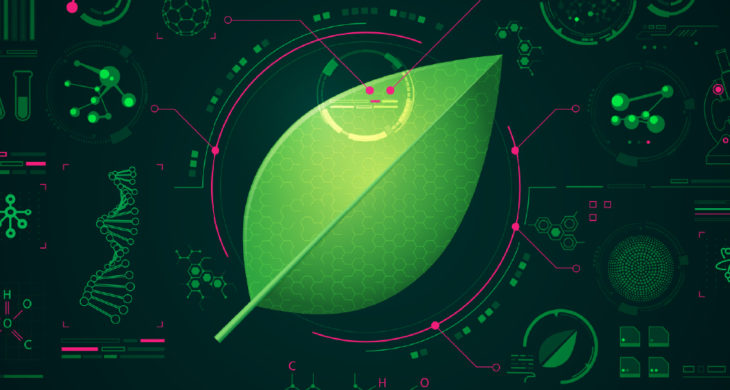
Date: 22nd October 2019
CRISPR–Cas systems represent the adaptive immune system of bacteria and archaea. Since 2012, scientists have been exploiting this system to edit the functionality of the genome in a wide range of organisms.
Cas9 is so far most prevalent in clinical and lab settings. However, there are several Cas proteins, with each one having its own characteristics and variants are beginning to be scrutinised. The underlying theory is that Cas variants may have unique specialities that can be best harnessed in diverse but distinct applications.
For example…
We reported the use of a modified Cas12a recently which provides some advantages over Cas9, such as retaining its recognition sequence after repair, and achieving both higher gene editing efficiencies and precision.
In October a Cas13-derived platform also hit our news as a method to detect and destroy single-stranded RNA viruses, in a novel strategy as an anti-viral defence.
All of the systems described above so far belong to the CRISPR/Cas Class 2 system.
Now entering the arena is the Class 1, CRISPR-Cascade system which scientists from the US have repurposed to enable gene activation in plants for the first time.
Class 1, CRISPR-Cascade system
The Class 1 system is currently underemployed as a eukaryotic genome editing tool although it is the most abundant and diverse of the groups. Whilst, Class 2 utilise a single effector, Class 1 are comprised of multi-subunit complex effectors.
In this work by Rodolphe Barrangou and his team, a subgroup of Class 1 CRISPR-Cas called Type I-E has been investigated. The Type I-E system uses the Cascade complex: a CRISPR-associated complex for antiviral defense and comprises five genes, CasA-E. Together with genes encoding Cas1-3 and a CRISPR array which encodes a single CRISPR RNA (crRNA) they comprise the single CRISPR locus.

Whilst CasA-D are responsible for the DNA recognition provided by the guide RNA (gRNA), CasA also determines self from non-self DNA by recognising a short ‘foreign DNA’ sequence (PAM). CasE is a ribonuclease and is required for crRNA maturation, with Cas3 providing exonuclease activity cutting the DNA. Cas1 and 2 are responsible for adaptive immune system in the bacteria.
The complexity and unique characteristics of the Cascade system offers scope for extensive engineering and advantages over current systems. The ribonuclease activity of CasE provides inherent guide RNA processing allowing co-transcription of several guide RNAs from a single promoter, the crRNA target recognition is large, potentially increasing specificity. Finally, Cas3 is an exonuclease (rather than endonuclease), it creates single stranded DNA which provides a new tactic for introducing large chromosomal deletions.
The team started the study by constructing expression cassettes, the first set contained the Cascade genes, all engineered with a nuclear localisation signal, in addition, further constructs were engineered for CasA, D and E with tethering of a transactivation domain. The final cassette contained the guide RNAs.
Gene activation via the Cascade system was assessed in Zea mays, maize. By introducing an immunofluorescent reporter expression cassette, the engineered Cascade system was compared with a ‘dead’ Cas9 equivalent also fused to a transactivation domain.
The Cascade system was able to activate the reporter in maize, and further investigation into the effect of transactivation domain fusion to the three Cas proteins was performed. Comparison studies using individual tethered transactivation domain to CasA, D or E versus all 3, showed a synergistic activation. This suggested that multiple domains could be recruited to the DNA and activate gene expression. Furthermore, the Cascade system showed a 2-fold enhancement in gene activation over the dCas9 system.
Endogeneous gene activation
Next the Cascade system was assessed for its ability to transcriptionally activate endogenous genes. A pigment gene was chosen for ease of readout. The Cascade system once again showed increased gene activation over control samples. Interestingly, whilst overall similar levels of pigment augmentation was observed with dCas9, the results over three experiments showed a more consistent levels of activation with the Cascade method.
Wider applications for CRISPR-Cascade
This study represents the first application of CRISPR-Cascade for gene activation in plants. It is likely that this CRISPR-Cascade tool can be exploited for example to enhance plant yields. The presence of multiple engineering sites available in the system may enable synergistic effects leading to much higher activation of gene expression than with the more traditional single effector classes of CRISPR-Cas.
Clearly, there are still many optimisations to be made, transactivation domain linker length, sequence and placement but with so many available sites for optimisation it is likely that it will be possible to see levels of endogenous activation rise above that achieved by dCas9.
From a wider perspective, last month Rodolphe Barrangou and a larger team from Duke University and North Carolina State University published the use of CRISPR-Cascade in human cells.
In the paper published in Nature Biotechnology, they engineered Cascade genes by fusing both activator and repression domains in order to both up-regulate and down-regulate endogenous gene expression. Together, with this study here in plants this is a proving to be a powerful system transferable to a range of cell types.
The recycling of CRISPR-Cascade across different eukaryotic cell types opens the door of opportunity to use in even further cell types and applications. Whilst the simplicity of the Cas9 system has been a key driver of its success, this new system offers complexity that can be exploited in a dynamic and exciting way.
There is room to explore tethering of a variety of functionally different domains to all components of the cascade. In fact, structural examination suggested that at least in some cases both termini of sub-units are exposed and therefore available for adapting.
Indeed, the type I-E CRISPR-Cascade has 11x the availability to acquire new domains when compared to Class 2 effectors.
Furthermore, one of the essential recognition sequences (PAM) that determines self from non-self DNA is simpler in the type 1 system and therefore it expands the regions accessible for gene editing.
The intricacies of this system potentially allow the researcher a unique opportunity to further control genome editing activity and provide us with a dynamic, and as yet relatively unexplored tool. However, this same complexity brings with it a network of unexplored interactions. It will require optimisation of delivery strategies perhaps similar to those we’ve recently seen in the use of nanoparticles containing ribonucleprotein. As with all gene editing technology off-target effects and safety risks will need to be evaluated.
Although there are many avenues still to explore this will be an exciting journey to follow. Will we be seeing this new CRISP-Cas tool in the clinic soon?
Young, J. K., S. L. Gasior, S. Jones, L. Wang, P. Navarro, B. Vickroy and R. Barrangou (2019). “The repurposing of type I-E CRISPR-Cascade for gene activation in plants.” Communications Biology 2(1): 383.
https://doi.org/10.1038/s41587-019-0235-7
Dolan, A. E., Z. Hou, Y. Xiao, M. J. Gramelspacher, J. Heo, S. E. Howden, P. L. Freddolino, A. Ke and Y. Zhang (2019). “Introducing a Spectrum of Long-Range Genomic Deletions in Human Embryonic Stem Cells Using Type I CRISPR-Cas.” Molecular Cell 74(5): 936-950.e935.
https://doi.org/10.1016/j.molcel.2019.03.014


